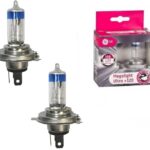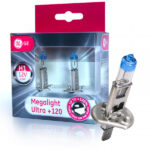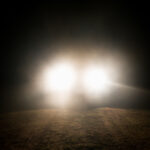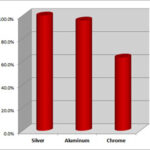CLICK FOR AVAILABILITY & CURRENT PRICING
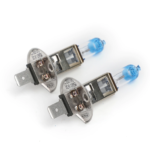 Halogen bulbs have made great technical advances over the past few years. Remember when in order to get the brightest lights we had to go from 55w to 100w bulbs? Many an (expensive) headlight switch was burned out by folks who neglected to also install a relay kit. Well, the high wattage bulbs are no longer required. Technology has increased the output of a 55/60w halogen bulb up to 150%. And with only one drawback: the brighter bulbs have a shorter life than the older ones. Most folks feel it’s well worth it.
Halogen bulbs have made great technical advances over the past few years. Remember when in order to get the brightest lights we had to go from 55w to 100w bulbs? Many an (expensive) headlight switch was burned out by folks who neglected to also install a relay kit. Well, the high wattage bulbs are no longer required. Technology has increased the output of a 55/60w halogen bulb up to 150%. And with only one drawback: the brighter bulbs have a shorter life than the older ones. Most folks feel it’s well worth it.
So what are the best of new bulbs? Audette Collection is fortunate to have the renowned automotive expert Daniel Stern as a technical consultant. When it comes to bulbs we rely completely on him. And at the AC SHOP we only offer the bulbs that Mr. Stern recommends. There are bulbs promising a larger increase in illumination and bulbs with compelling names and fancy packaging but, as with all our products, we strive to offer the best in terms of quality and performance. And which ones are they? Let’s get started.
H1 & H4 bulbs recommended by Daniel Stern:
H1 & H4 bulbs recommended by Daniel Stern:
GE (Tungsram) Megalight Ultra +120
FAQ
Q: Why do you recommend these when +150 bulbs are available? Aren’t those brighter?
A: This is a perfect example of why surface numbers often don’t tell the whole story. We’re offering the +120s because they provide more light on the road. The +150 has much more blue area on the glass (probably to provide an HID look) which uselessly tints the light while blocking a percentage of it from reaching the road. How much light is blocked by blue tint? Consider the Sylvania ZXE, a fully blue-tinted bulb line:
Actual test results from an integrating sphere:
ZXE H4 Bulb. +130 (12.8 volts)
Without Blue Coating:
Low beam: 1350 lumens
High beam: 2000 lumens
With Blue Coating:
Low beam: 890 lumens = Decrease of 34%
High beam: 1400 lumens = Decrease of 30%
Another factor is that the performance boost shortens the life span of the bulb. And the bigger the boost the more the life span is shortened.
And there’s one more pay-off in dealing with facts. Often times the more flashy the numbers the higher the cost. In this case the Tungsram +90 / +120 bulbs are less expensive than the higher plus bulbs – and substantially out-perform them.
Q: Why not just plug the LED bulb “upgrades” into H4 reflector headlights instead of halogen bulbs?
A: Please don’t do this. Some folks have tried replacing the H4 bulbs in their reflector headlights with LED bulbs and all that accomplishes is blinding on-coming drivers. The reflectors are not engineered for the scattered beams of the LEDs. Perhaps the technology will develop but until them please do not install LED bulbs in your reflector headlights. The Tungsram 60/55w Mega Ultra +120 bulbs are cheaper and – they work.
The Hillbilly Look. Probably LED bulbs improperly installed in reflector headlights.
Dive a Little (a Lot) Deeper
H1/H4 “Plus” Bulb Technology
By Daniel Stern
The non-plus standard H4 bulbs are built as a compromise, endeavoring to strike a balance between performance and longevity. The filament changes required to make a long-life bulb tend to reduce the beam focus, which shortens seeing distance and makes the light browner — but lifespan is lengthened.
The opposite filament changes are made to create the “Plus” bulbs (+30, +50, +80, +90, +100, +120…). Lifespan is shorter, but the beam focus is better so the seeing distance is longer – and the light color is whiter and less brown.The lifespan difference is less stark than it might seem because the long-life bulbs not only start out dimmer, but they last (i.e., keep lighting up) long enough to lose significant amounts of their original output. The higher-performing bulbs burn out before they drop much of any intensity.

The above is from a Hella technical paper goes into some detail on the performance difference between a standard bulb and a “plus” bulb. When it was written, the state of the art was +30, so this is a comparison between a long-life and a +30 bulb. Additional research and development has brought us to the present where we have +100, +120, +130, +150 bulbs. There are two things to keep in mind:
1. This won’t continue forever; there are certain hard physical limits of the technology.
2. A bigger plus-number doesn’t necessarily mean a better bulb. Most all of the +130 and +150 bulbs have more and deeper blue tint on the bulb glass, especially in the area surrounding the high beam filament. Any amount of blue filtration sharply reduces the amount of light reaching the road in exchange for no benefit at all except a bogus appeal to fashion. Headlamps are life-safety equipment, not fashion toys, so this is a bad deal and those bulbs are best avoided.
Now, what about the blue ring just below the tip of the good +120 bulbs? That’s actually completely different. The marketers say this is there to make a fashion statement with your headlamps, but it’s really there for a stealthier reason: to cut the mean spherical output of the bulb down to legal levels as tested in an integrating sphere (the machine used to measure light output from a bulb to determine if it falls within the legally required range). The blue ring filters a part of the bulb that has nothing to do with beam formation because it’s not located between the filament and the reflector. So it cuts down on the total light output from the bulb when all directions are considered, as in the sphere, without reducing the light output in the relevant directions as in the headlamp. In other words, the filament is pumping mad lumens through the uncolored glass where the reflector is looking. Clever trick. It works.
Unlike the higher power standard H4 bulbs, such as 100w, the Plus bulbs do not require a relay kit as they do not draw more current then the standard 65w bulbs. There is a big “but” however…
“Require” is squishy here — if the wiring on the car is in good shape, then there won’t be any problem provoked by these bulbs. However, any bulb will give more and better light with low-resistance feeds and grounds. The will bulb’s lifespan will be shortened.
Q: OK, why not just use higher wattage bulbs like we always have. They’re safe with a relay kit, right?
Stern: With upgraded wiring and relays in the headlamp circuit It’s tempting to grab for big wattage numbers, but for a sturdy collection of good reasons (more info on request) it’s usually counterproductive.
As wattage increases, the size of the filament necessarily increases, both in length and in diameter. This has a strongly negative effect on beam focus — the more closely the filament approximates a point source of light, the better the beam focus, and the greater the size of the filament the poorer the beam focus. Effective seeing distance plummets. At the same time, foreground light goes to nuclear levels, which does two things at the same time:
1) It fools you into thinking you’ve got “excellent” lighting. We humans are very poor subjective judges of our visual performance; it’s very easy to create situations in which we think/feel we can see much better (ormuch worse) than we actually can.
2) It absolutely kills your distance vision. The brightly-lit foreground causes your pupils to constrict, with the result that you can meaningfully see all the irrelevant stuff going on within 50 feet of the car, and beyond that, you’re effectively blind.
Also, the higher heat output from the high-watt bulbs greatly accelerates the cooking-to-death of the shiny stuff that makes the reflectors reflective. As you know, headlamp reflectors are shiny by dint of a super-thin layer of vapor-deposited aluminum with a super-thin protective clear topcoat. With years of headlamp usage the topcoat eventually breaks down and allows the aluminum to begin oxidizing.
Optical degradation of the reflector is grossly advanced well before you can see it with the naked eye (which is sometimes not possible), though looking at it wouldn’t do you much good; by the time the reflector has degraded enough to be described as “just a little imperfect” the lamp is past dead. For mental calibration on this point: even the most costly, beautiful chrome plating, the kind that makes bumpers look 10 feet deep
on a show car, is only about 67% reflective. That’s not nearly good enough for optical purposes; an as-new headlamp reflector is over 99% reflective, and there is no bulb that can compensate.
CLICK FOR AVAILABILITY & CURRENT PRICING

© 2000-2022 Audette Collection / AC SHOP
Air Cooled Porsche Lighting Specialists

